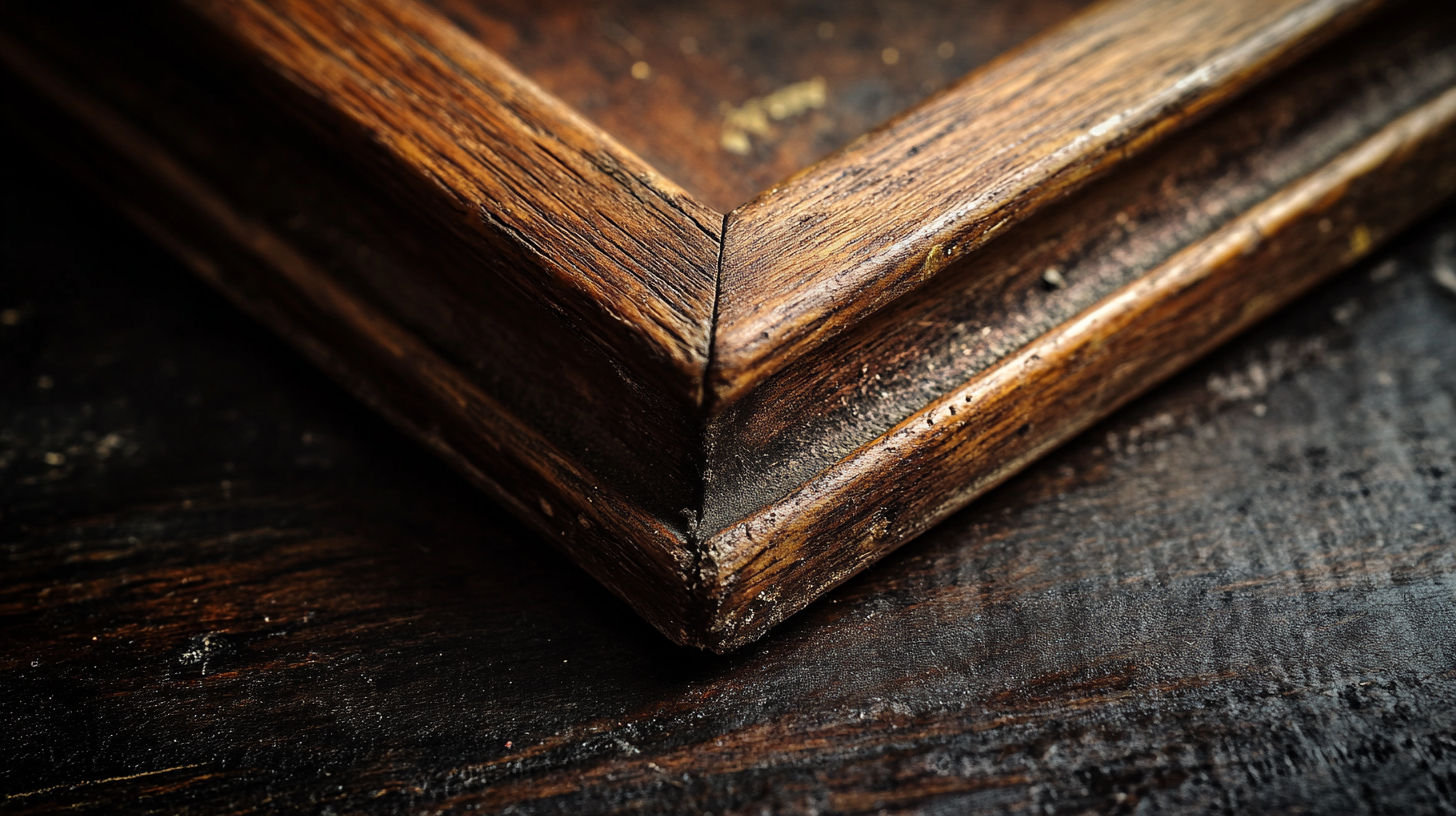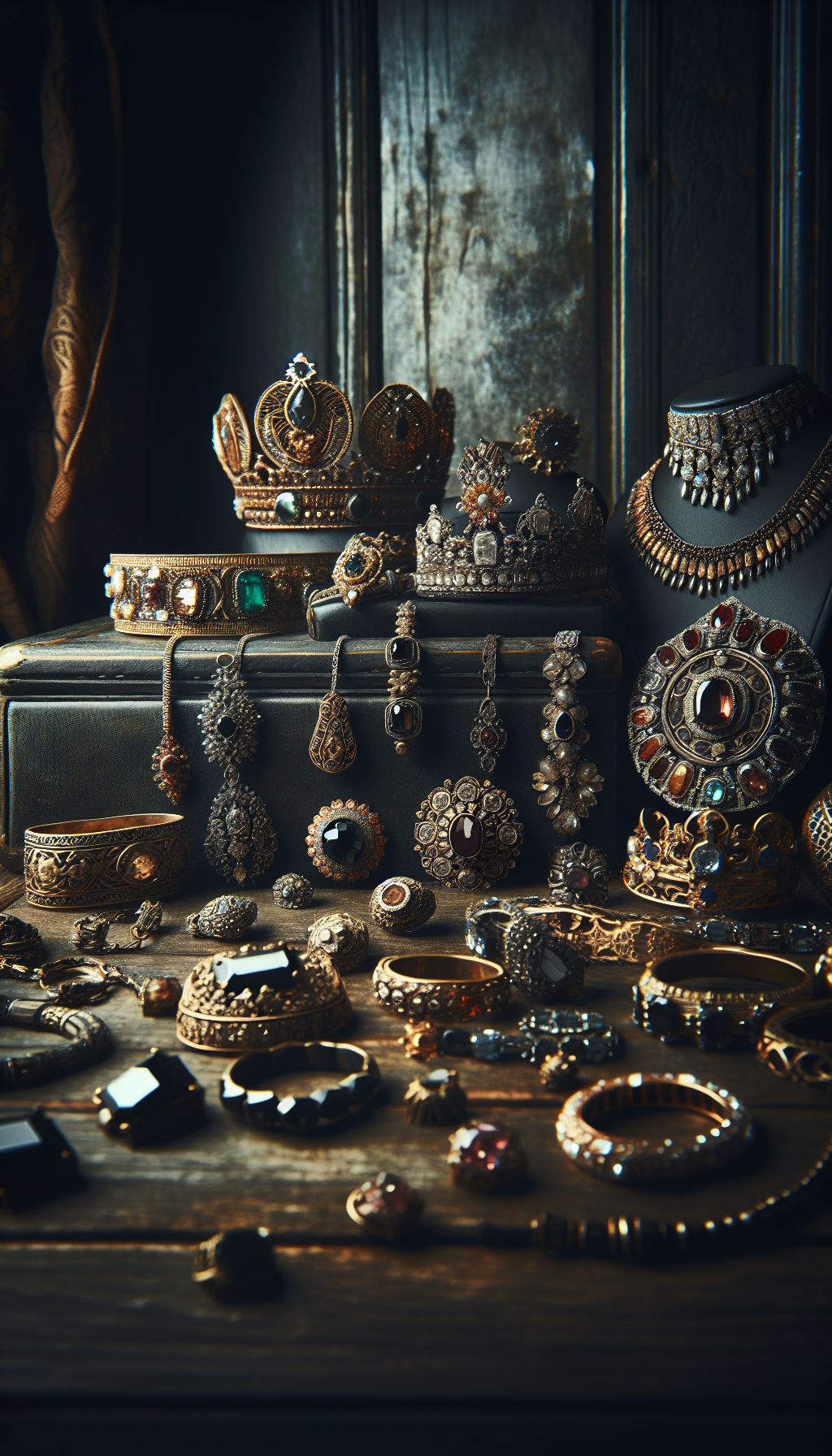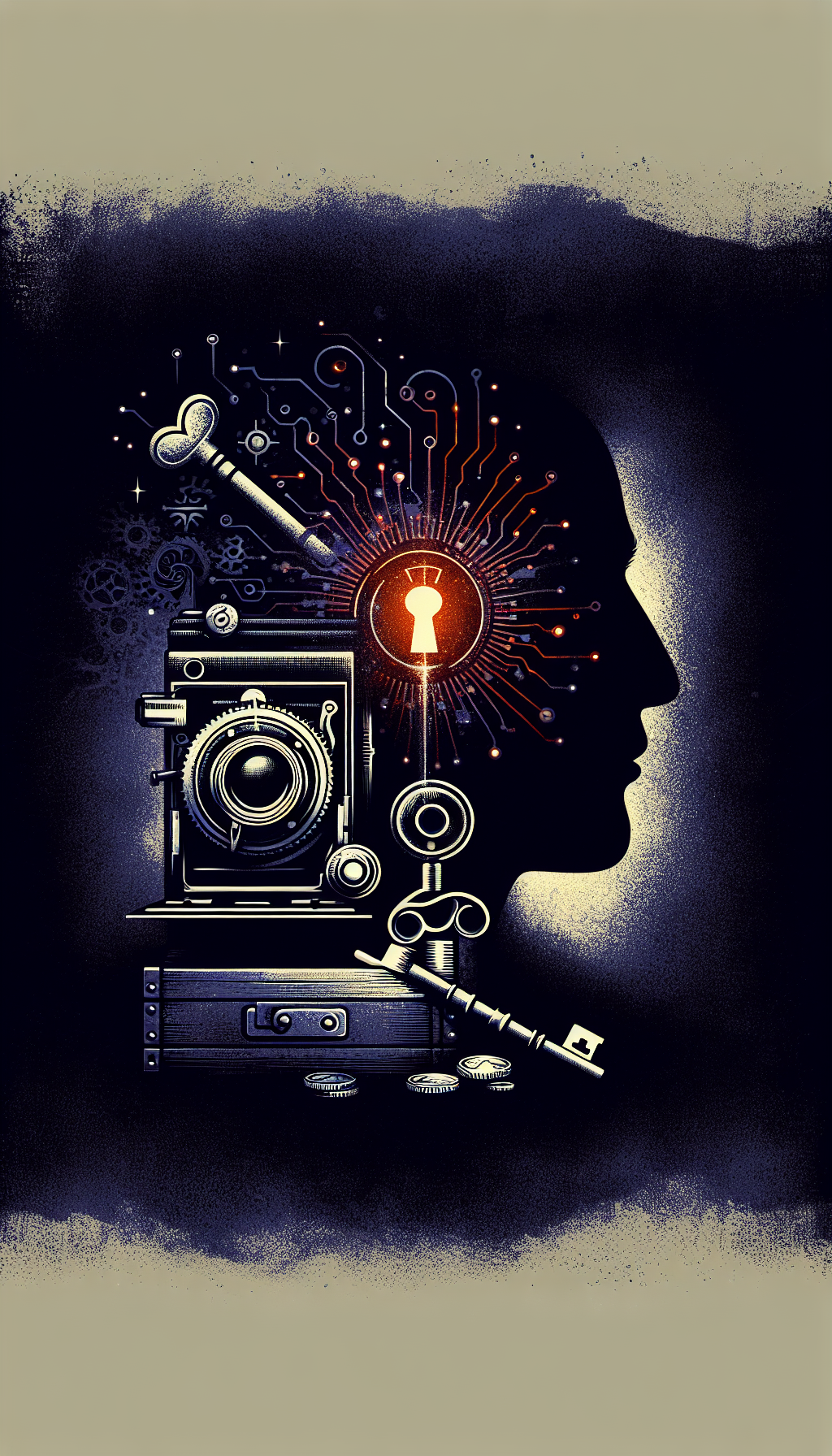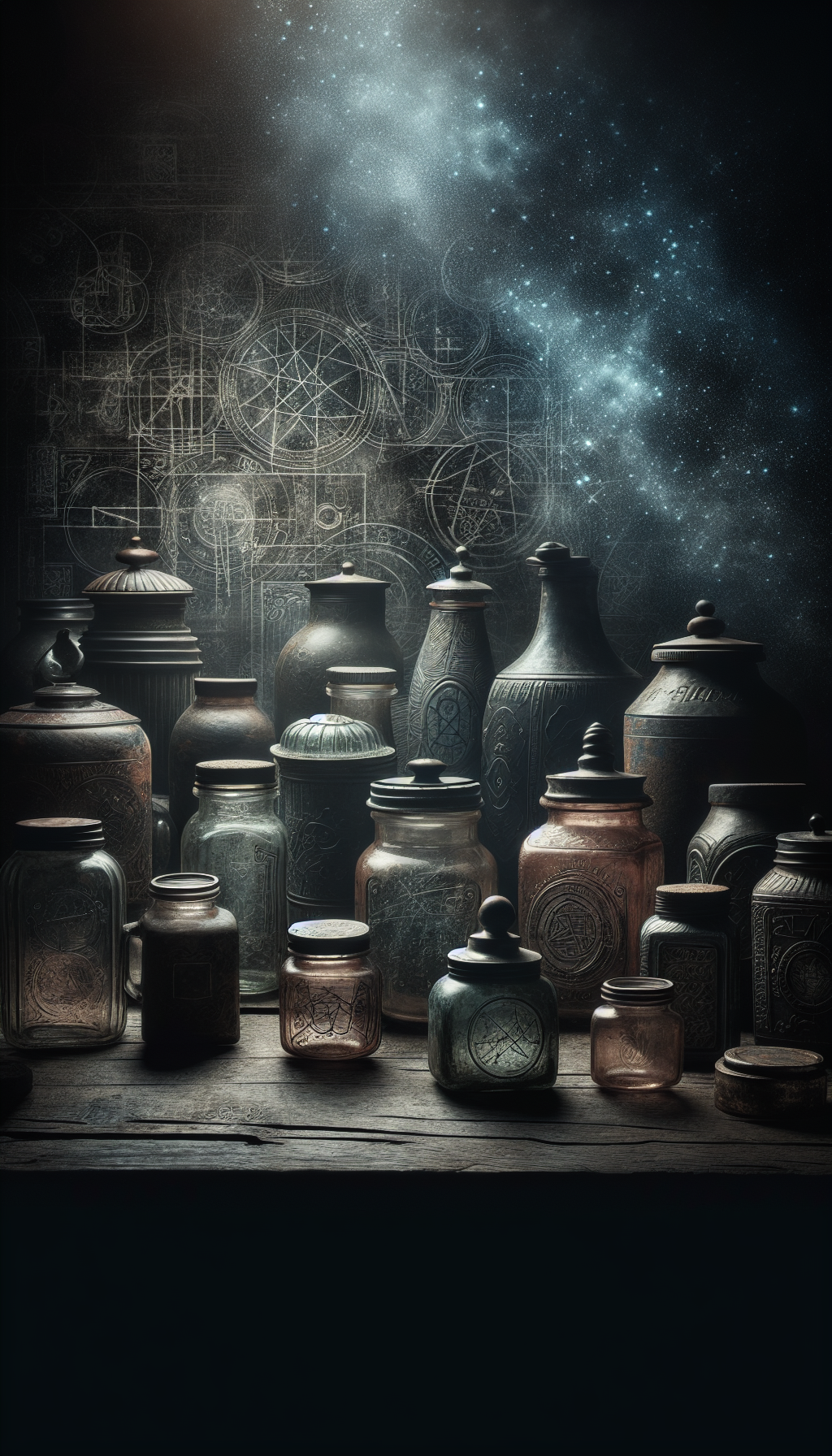Introduction to Antique Picture Frames
Generally, a picture frame must be at least 100 years old to be considered truly antique. However, many “vintage” frames from the early-to-mid 20th century can also have significant value. The market for authentic antique frames continues to grow, with fine examples from the 18th and 19th centuries often commanding prices in the thousands of dollars at auction.
Antique Frame Market Insights
Minimum age for true "antique" classification
What fine 18th-19th century frames can command
How original condition affects market value
Let’s dive into the specific characteristics that will help you determine if that ornate frame you found is a valuable antique or a more recent reproduction.
Examining the Back: First Steps in Authentication
Signs of Age on the Frame Back
When inspecting the back of a potential antique frame, look for these specific indicators:
Wormholes and Insect Damage: Small, irregular holes in wooden frames often indicate genuine age, as these are caused by wood-boring insects over many decades.
Natural Warping: Slight warping from humidity changes over many years is common in antique frames. This natural distortion is difficult to artificially recreate.
Hardware and Hanging Mechanisms: Antique frames often feature hand-forged nails, square-headed nails rather than modern round ones, or old-style picture wire attachments.
Craftsman’s Labels: Look for paper labels from the frame maker or gallery. According to Victorian Frame Company, these often include the date of creation and can be invaluable for authentication.
Patina Development: The natural aging of the wood shows a consistent, even darkening that is nearly impossible to fake convincingly.
As noted by frame restoration experts at Trefler’s, “Because these are challenging to mimic, a distressed reproduction frame is far less likely to have these indicators of age.”
Material Analysis: What Frames Were Made Of
Common Materials in Authentic Antique Frames
According to experts at Frinton Frames, “Antique frames that are older than the 19th century were always made from wood, hand carved and gilded in gold leaf. If you have a picture frame that is made from plaster or anything other than wood, it is likely that this frame is 19th century or newer.”
Here’s what to look for when analyzing frame materials:
Material Authentication Checklist
Key indicators to examine when assessing frame materials
- Solid wood construction (not composite wood or plaster)
- Evidence of hand carving rather than machine molding
- Gold or silver leaf gilding rather than paint
- Darkened natural patina on wood surfaces
- Original finish without modern varnishes or sealants
- Age-appropriate joinery methods (hand-cut joints)
Wood type can also provide clues about a frame’s origin and age. European frames were commonly made from oak, walnut, or fruitwoods like pear, while American frames often utilized pine, maple, or cherry. The wood choice often reflected what was locally available during the period of creation.
Frame scholar and expert Dr. Mark Sublette explains in his YouTube tutorial that examining the wood grain and understanding period-appropriate construction materials is essential to distinguishing authentic pieces from reproductions.
Gilding Techniques and Surface Examination
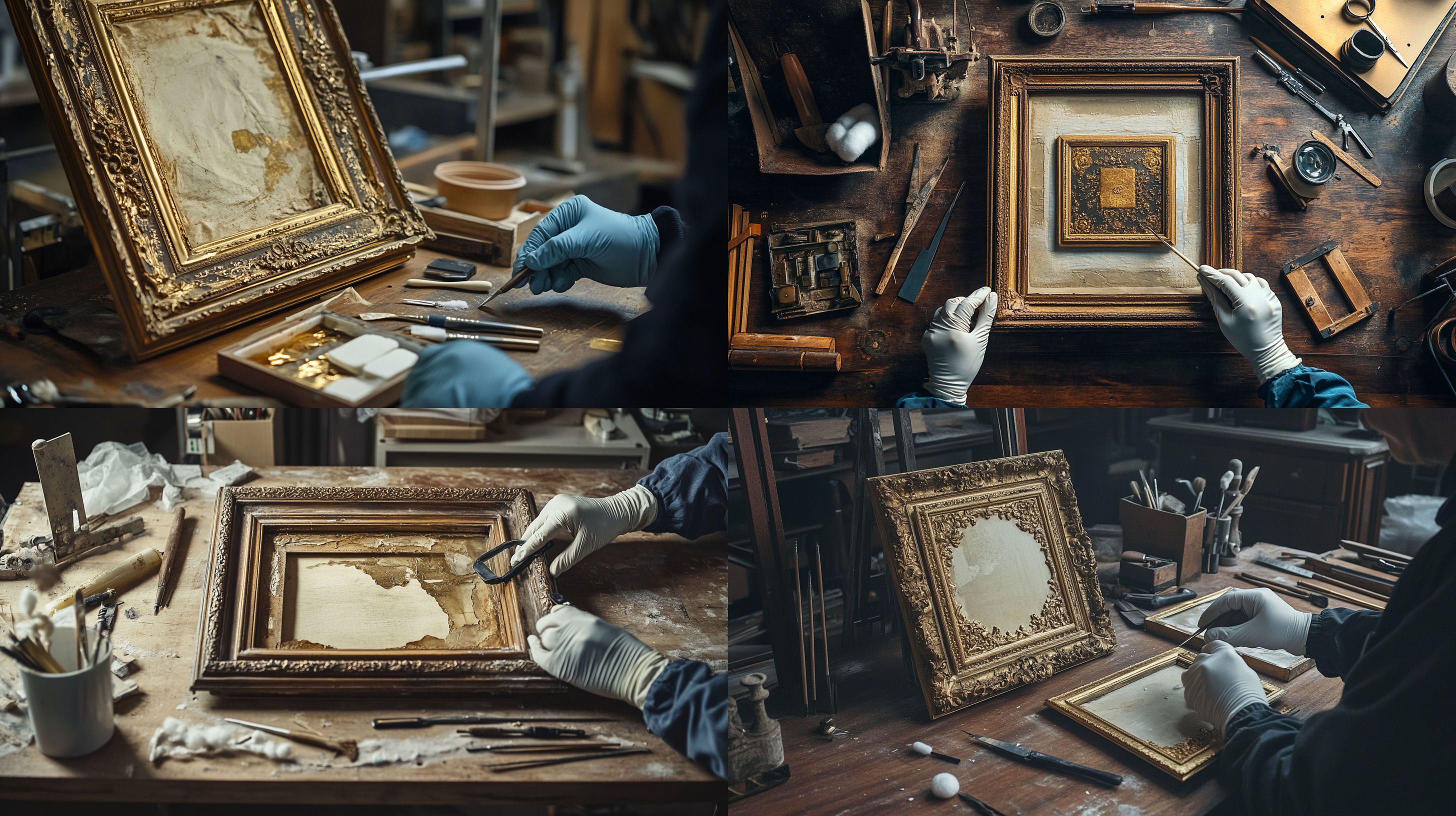
Identifying Authentic Gilding
When examining a potentially antique gilded frame, look for these characteristics:
Gilding Lines: According to frame experts at Lowy 1907, authentic antique frames often show subtle lines where sheets of gold leaf overlap. These lines appear at regular intervals, usually every few inches, and are the result of the hand application process.
Burnishing Marks: Areas of high polish next to matte surfaces indicate hand burnishing, a technique where craftsmen selectively polished certain areas of the gold leaf to create visual interest.
Crackling Patterns: Often called “craquelure,” these fine networks of tiny cracks develop as the gesso layer beneath the gilding ages and contracts. Authentic craquelure forms naturally over decades and follows unpredictable patterns.
Gesso Layer: The white preparation layer visible in worn areas should be hand-applied, showing subtle variations in thickness rather than the machine-uniform application seen in modern frames.
Red or Yellow Bole: Look under worn gold areas for the clay-based preparation layer (bole) which was typically red or yellow in antique frames. This colored layer was used to enhance the warmth of the gold leaf.
According to expert frame conservators, modern reproductions often use gold-colored paint or “quick” gilding techniques that lack the depth and dimensional quality of traditional water gilding with genuine gold leaf.
Frame Styles Through the Centuries
Evolution of Antique Frame Styles
- 17th Century
Baroque & Cassetta Frames
Characterized by dramatic carved elements, bold sculptural quality, and often religious symbolism. Cassetta frames featured flat profiles with raised inner and outer edges. - 18th Century
Rococo & Neoclassical Frames
Rococo frames displayed asymmetrical designs with flowing C-curves and naturalistic elements like shells and flowers. Later Neoclassical frames showed more restrained, symmetrical designs inspired by ancient Greek and Roman architecture. - 19th Century
Victorian & Aesthetic Movement
Victorian frames were often heavily ornate with Gothic revival influences. Later Aesthetic Movement frames featured more delicate Japanese-inspired motifs and simplified forms. - Early 20th Century
Arts & Crafts and Art Nouveau
Arts & Crafts frames featured simpler geometry with visible craftsmanship. Art Nouveau frames incorporated sinuous, organic line work and natural motifs like flowers and vines.
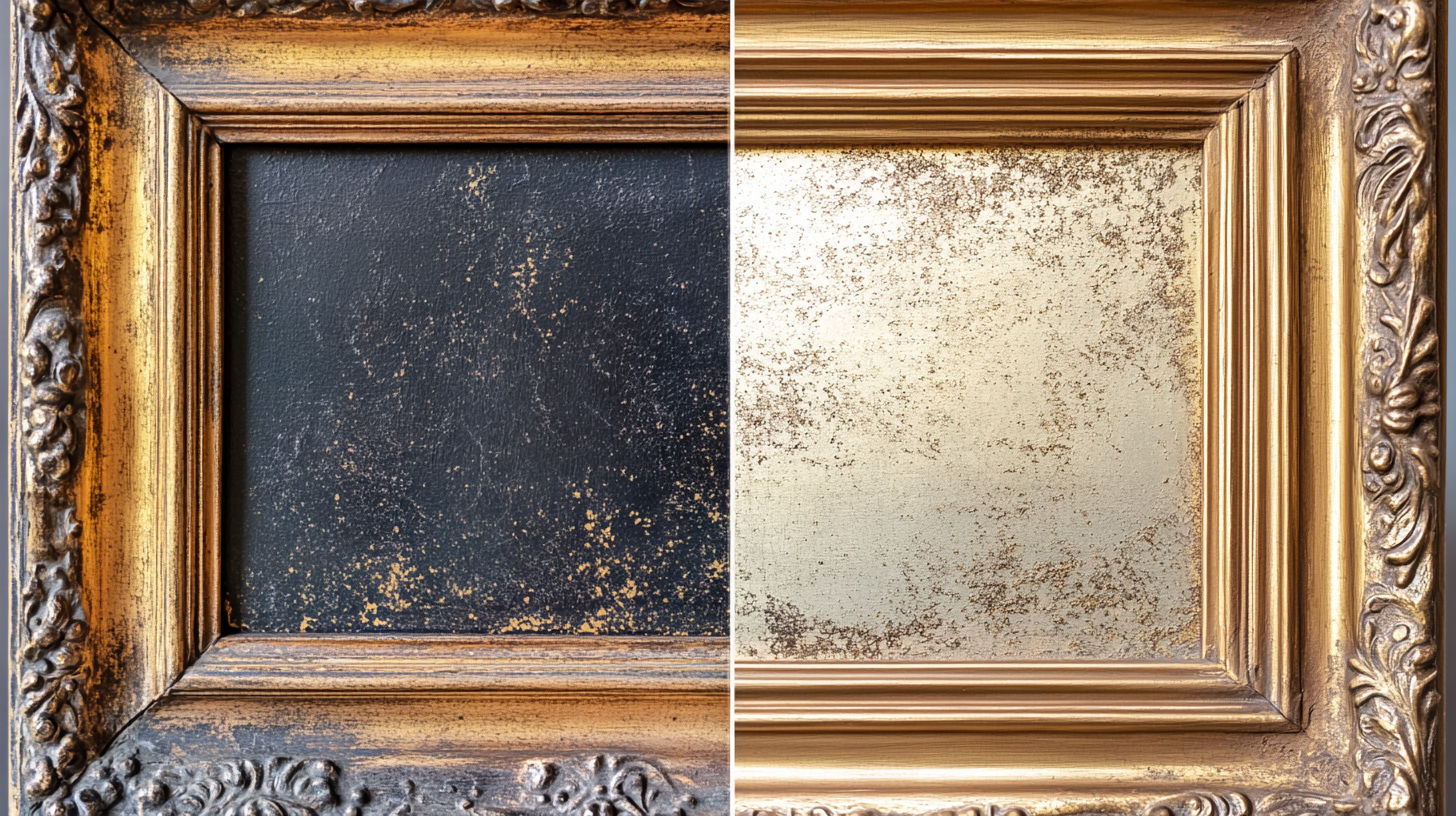
According to LoveToKnow, certain style indicators can help with identification:
“Frames with sharp, angular corners often date to the Federal or Empire period (early 19th century), while those with rounded corners and more organic designs typically come from the Victorian era. Art Nouveau frames feature flowing, asymmetrical designs, while Art Deco frames showcase bold geometric patterns.”
Study period-specific catalogs from museums and auction houses to familiarize yourself with these distinctive stylistic elements. The Metropolitan Museum of Art and other major institutions offer excellent online resources for studying historical frame designs.
Antique Frame Value by Period & Condition
Average market values for authentic antique frames (2024)
</tbody>
</table>
Construction Techniques and Joinery
Key Construction Elements to Examine
When evaluating frame construction:
Corner Joints: Pre-20th century frames typically feature hand-cut mitered corners joined with wooden splines, mortise-and-tenon joints, or hand-forged nails rather than modern staples or screws.
Tool Marks: Look for evidence of hand planes, chisels, or other hand tools. According to antique experts at Antiquers.com, authentic antique frames often show subtle inconsistencies from hand work.
Assembly Methods: The back panel attachment on antique frames often used small nails or wooden pegs, while modern frames typically use staples, flexible points, or standardized hardware.
Applied Ornament: Examine decorative elements to determine if they were hand-carved from the wood itself (as in earlier frames) or made from composition (a mixture of chalk, glue and other materials) and applied (more common after the mid-19th century).
As frame restoration expert Larry Shar of Julius Lowy Frame & Restoring Company explains, “The hallmark of an antique frame is the evidence of the craftsman’s hand throughout—in the carving, the gilding, the joining. These subtle variations are nearly impossible to replicate in modern production.”
Dating Through Hardware and Backing Materials
Hardware Evolution Timeline
Pre-1850s: Hand-forged nails, wooden pegs, or mortise-and-tenon joints. Backing materials were typically wood panels or handmade paper.
Mid-to-Late 19th Century: Cut nails (square in cross-section) replaced hand-forged ones. Wire hanging systems began replacing earlier string or cord methods.
1880s-1920s: Introduction of cardboard backing materials. Picture wire became standardized. Specialized hanging hardware emerged.
Post-1930s: Machine-made screws with standardized threads. Mass-produced metal fasteners. Introduction of synthetic backing materials.
According to frame conservators, the type of backing material can be particularly revealing. Early frames often used wooden boards, while mid-19th century frames might have used handmade paper backings. Machine-made cardboard became common by the late 19th century, and modern synthetic materials appeared in the 20th century.
Advanced Authentication Methods
Scientific and Professional Analysis
Wood Species Analysis: Wood science experts can identify the specific species of wood used, which can help place the frame in historical and geographical context.
Ultraviolet (UV) Light Examination: UV light causes different materials to fluoresce in distinctive ways. Original gilding, old varnishes, and restoration work often appear distinctively different under UV illumination.
X-Ray Fluorescence (XRF) Analysis: This non-destructive testing can determine the chemical composition of gilding and identify authentic gold leaf versus modern substitutes.
Dendrochronology: For wooden frames of significant value, tree ring dating can sometimes establish when the wood was harvested.
Professional Appraisal: Consulting with a specialized frame historian or appraiser is often the most reliable approach for definitive authentication of valuable pieces.
As Dr. Mark Sublette demonstrates in his video on frame authentication, professional appraisers use a combination of these methods along with extensive knowledge of historical styles and construction techniques to make authoritative judgments.
Common Reproduction Indicators to Watch For
Red Flags for Reproductions
Machine-Perfect Regularity: Hand-crafted antique frames show subtle variations in carving depth, gilding, and proportions. If every decorative element is perfectly identical, be suspicious.
Modern Fasteners: The presence of Phillips-head screws, staples, or other 20th-century fasteners is a clear indication of a more recent origin.
Artificial Aging: Reproductions often show artificial distressing that appears too uniform or deliberate, rather than the random patterns of natural aging.
Composite Materials: Frames made primarily from plaster, resin, or plastic compounds rather than solid wood are almost certainly modern reproductions.
Inconsistent Style Elements: Reproductions sometimes mix decorative elements from different historical periods in ways that would not have occurred in authentic period frames.
Modern Adhesives: The presence of modern glues like PVA (white glue) or epoxy is a definite indication of recent manufacture.
According to authentication experts, one telltale sign of reproduction is the weight - antique solid wood frames with traditional gesso and gilding are typically heavier than their modern counterparts made with lighter, synthetic materials.
Common Questions About Antique Picture Frames
How do I tell if my picture frame is valuable?
Value in antique frames is determined by several factors:
- Age: Generally, frames over 100 years old have greater potential value
- Craftsmanship: Hand-carved frames with fine detailing command higher prices
- Condition: Original finish and gilding with minimal restoration is preferred
- Provenance: Documented history or connection to notable artists/makers increases value
- Rarity: Unusual designs or styles can command premium prices
According to market experts, museum-quality 18th century frames in excellent condition can sell for $5,000 to $20,000 or more, while good quality 19th century frames typically range from $500 to $3,000 depending on size, style and condition.
How can I determine how old my picture frame is?
To determine a frame's age, examine these key indicators:
- Back of the frame for old hardware, wormholes, or maker’s labels
- Construction materials (solid wood vs. composite materials)
- Joinery methods and corner construction
- Gilding techniques and aging patterns
- Stylistic elements that correspond to specific time periods
- Tool marks showing hand vs. machine manufacturing
For definitive dating of valuable frames, consult with a professional appraiser or frame historian who specializes in period frames.
What makes antique frames from the 1800s distinctive?
Frames from the 19th century (1800s) have several distinctive characteristics:
- Victorian frames (mid-to-late 1800s) often featured elaborate ornamentation including scrollwork, floral motifs, and sometimes Gothic revival elements
- Empire and Federal style frames (early 1800s) displayed more classical influences with symmetrical designs
- Eastlake and Aesthetic Movement frames (late 1800s) showed more geometric patterns and Japanese-inspired designs
- Many 19th century frames incorporated composition ornament (a mixture of chalk, glue and other materials) applied to wood substrates
- Later Victorian frames might incorporate machine-made elements as industrial production methods advanced
The back typically shows cut nails rather than earlier hand-forged nails or later wire nails
How do I clean or restore an antique picture frame?
Antique frame cleaning requires great care to preserve value:
- First, always test any cleaning method on a small, inconspicuous area
- For general dust, use a soft brush or dry microfiber cloth
- For gilded surfaces, avoid water-based cleaners which can damage gold leaf
- Minor grime can sometimes be removed with a slightly dampened cotton swab
- Never use commercial metal polishes on gilded surfaces
- For significant damage or valuable frames, consult a professional conservator
Improper cleaning can significantly reduce an antique frame’s value. As experts at Trefler’s note, "Original condition, even with some age-appropriate wear, is generally preferable to poorly executed restoration."
Where can I get my antique frame appraised?
Several options exist for professional antique frame appraisal:
- Specialized frame galleries like Lowy in New York or Gill & Lagodich
- Major auction houses like Christie’s or Sotheby’s (for significant pieces)
- Professional appraisers certified by the American Society of Appraisers (ASA) or International Society of Appraisers (ISA)
- University art departments sometimes offer authentication services
- Museum conservation departments occasionally provide consultations
For insurance purposes, seek a written appraisal from a certified appraiser with expertise in period frames. For simple authentication, many frame conservators offer consultation services at hourly rates.
Conclusion: Becoming an Antique Frame Expert
Remember that authentication is often a matter of accumulated evidence rather than a single definitive feature. The more period-appropriate characteristics a frame exhibits, the more likely it is to be authentic. For valuable or rare examples, consulting with professional appraisers or conservators remains the most reliable approach to definitive authentication.
The world of antique picture frames offers a fascinating window into historical craftsmanship and artistic trends. Whether you’re a serious collector, dealer, or simply an enthusiast hoping to identify a family heirloom, developing your eye for these distinctive characteristics will enhance your appreciation of these beautiful functional art objects.
External Resources for Antique Frame Research
Trefler's Guide to Giltwood Frames
Comprehensive guide to identifying age and value of antique giltwood frames with expert conservation tips.
Lowy 1907 - How to Inspect an Antique Frame
Step-by-step inspection guide from one of America's oldest and most respected frame galleries.
Frinton Frames - Antique Authentication
Detailed authentication process with specific period indicators from UK frame experts.
Dr. Mark Sublette's Frame Authentication Video
Visual demonstration of how to distinguish authentic antique frames from modern reproductions.
LoveToKnow Antique Frame Styles Guide
Illustrated overview of historical frame styles with identification tips and value estimates.
Metropolitan Museum of Art - Frame Collection
Extensive online archive of historical frames with detailed provenance information and high-resolution images.
Developing expertise in antique frame identification takes time and exposure to many examples. Visit museums, auction previews, and antique shops to train your eye, and don’t hesitate to consult with professionals when evaluating potentially valuable pieces. With practice, you’ll develop the connoisseur’s eye needed to spot authentic treasures among the many reproductions in today’s market.
Get a Professional Appraisal
Unsure about your item’s value? Our certified experts provide fast, written appraisals you can trust.
- Expert report with photos and comps
- Fast turnaround
- Fixed, upfront pricing
No obligation. Secure upload.
| Category | Price | Notes |
|---|---|---|
| 17th-18th Century Baroque/Rococo | $2,000-$15,000+ | Museum-quality examples with documented provenance |
| 19th Century Victorian/Empire | $500-$3,000 | Original gilding, minimal restoration |
| Early 20th Century Arts & Crafts | $200-$1,500 | Original finish, attributed maker |
| Art Nouveau/Art Deco | $300-$2,500 | Condition-dependent, signature designs command premium |
